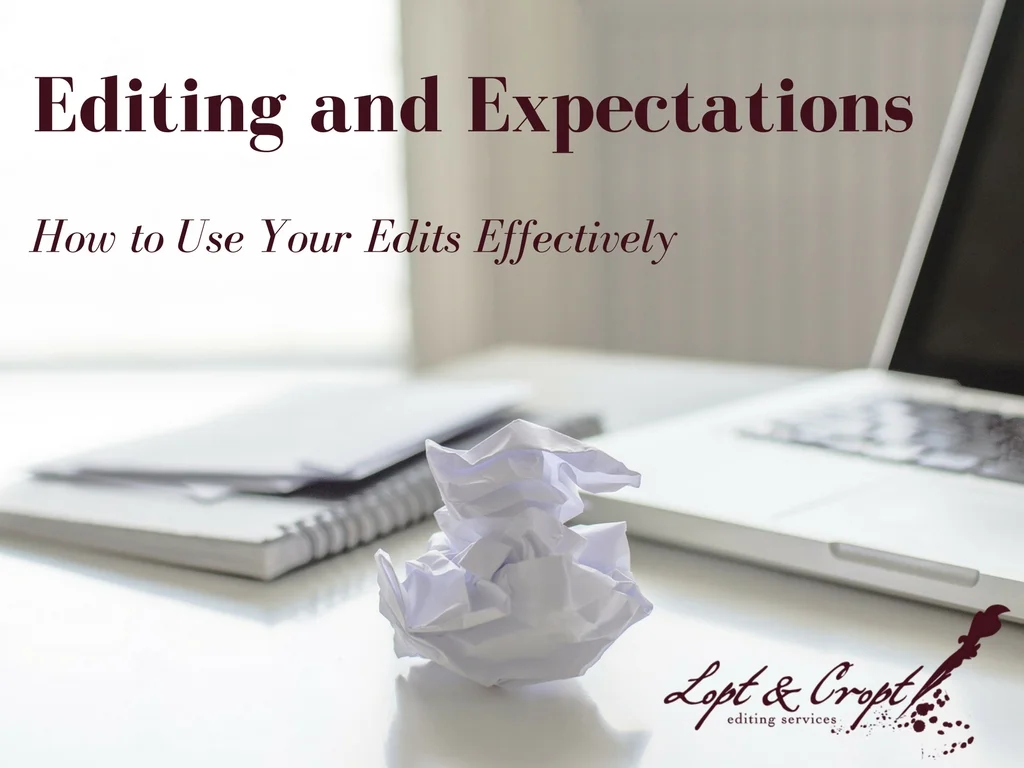Editing and Expectations is a blog series about the entire editing process, from figuring out when and how to start working with an editor to getting the most out of your edits - and everything in between. This is the fifth in the series.
Ok, so you’ve got your edits back from your editor, and you’re staring at a document full of comments, deletions, moves, and tons of red. I know it feels like the editor just took a knife to canvas and tore it to shreds, but don't panic. What’s the best way to approach your edits and apply them to your revision process?
Be Strategic
First, you want to read through all of the edits—and the critique/report if you have one—and get the lay of the land: is it as bad as it looks, or is it just that you tend to splice your commas? (That looks messy, but it’s pretty straightforward to fix). Decide what you want to tackle first: clean up the tiny quick-fix mistakes (punctuation, short queries, etc.) to get them out of the way so you can have as clean a document as possible when you go to fix the bigger structural issues? Or do you want to start with the big stuff and leave the tiny bits to perfunctorily check off at the end? You know how you work best, so choose one and keep pushing forward.
Pick Your Battles
You might be seething at the nitpickiness of the editor (that's what they pay me the bucks for, guys!) or just crushed at how much there is to correct. It can be overwhelming and disheartening to think that the editor didn’t like it so tore it apart—but that’s not necessarily the case. If it’s a really great story with a ton of potential, I might mark up like crazy, but only because I want that potential to come through. Think of the edits as opportunity rather than disparagement, and remember that the editor’s goal is to make sure you put your best story out; the edits will help you do that.
As you go through the edits, make a note of what you agree with and what you don’t. You don’t have to agree with every edit the editor makes. Don’t be afraid to ask the editor what they meant by something or why they made the choice they did. A good one can tell you exactly what their reasons were. I often chat with my clients on FaceTime or Skype because it’s so much easier sometimes to just talk “in person” and with facial expressions visible instead of email. Video chats are also great to discuss big-picture issues so we can make connections as we talk it out.
I love clients who aren’t afraid to fight me on something and will push back on the things they think are important to the story. But be introspective and consider why you want to keep something the editor has cut. Is it crucial to your plot, character, theme, etc? Does it just sound really good to your ear? Are you attached to it because that line was a turning point in your writing? If you have a good reason to keep it, then I want to know so we can make sure it comes through clearly in the story. Figure out your why and if that why makes this bit worth keeping.
Or, on the flip side, if the editor has added in something: is it in your voice? Does it match your intention? Does it make sense in the story as a whole?
Learn and Grow
As you’re revising from the editor’s work, take note of the words you use frequently or the structures you’re fond of. For example, do your characters’ eyes twinkle all. the. damn. time? Do you use adverbs in dialogue tags too much (“she said evenly,” “he replied furiously,” “I exclaimed bitterly”). Teach yourself to avoid those writing quirks in future—or if not avoid, limit severely. I got schooled recently on the difference between “whether” and “if” and you better believe I do a quick Ctrl-F for that in documents now. You might want to put up a Post-It up to remind yourself to check for these things.
The editing process is all about learning to be a better self-editor for next time. It’s not just to have a flawless manuscript at the end, but also to help you really improve your craft and become a better writer.
Now it’s time to put your head down and revise, revise, revise. Depending on how heavy the revisions are, you might want your editor to take another pass at the manuscript so there’s another set of eyes on the updated version. But you’re that much closer to a completed manuscript and a book in the world!
Hey, I'd love for you to follow me on Facebook where I post weekly videos, articles, and other fun stuff. Or if you're on Twitter, come chat with me there!


